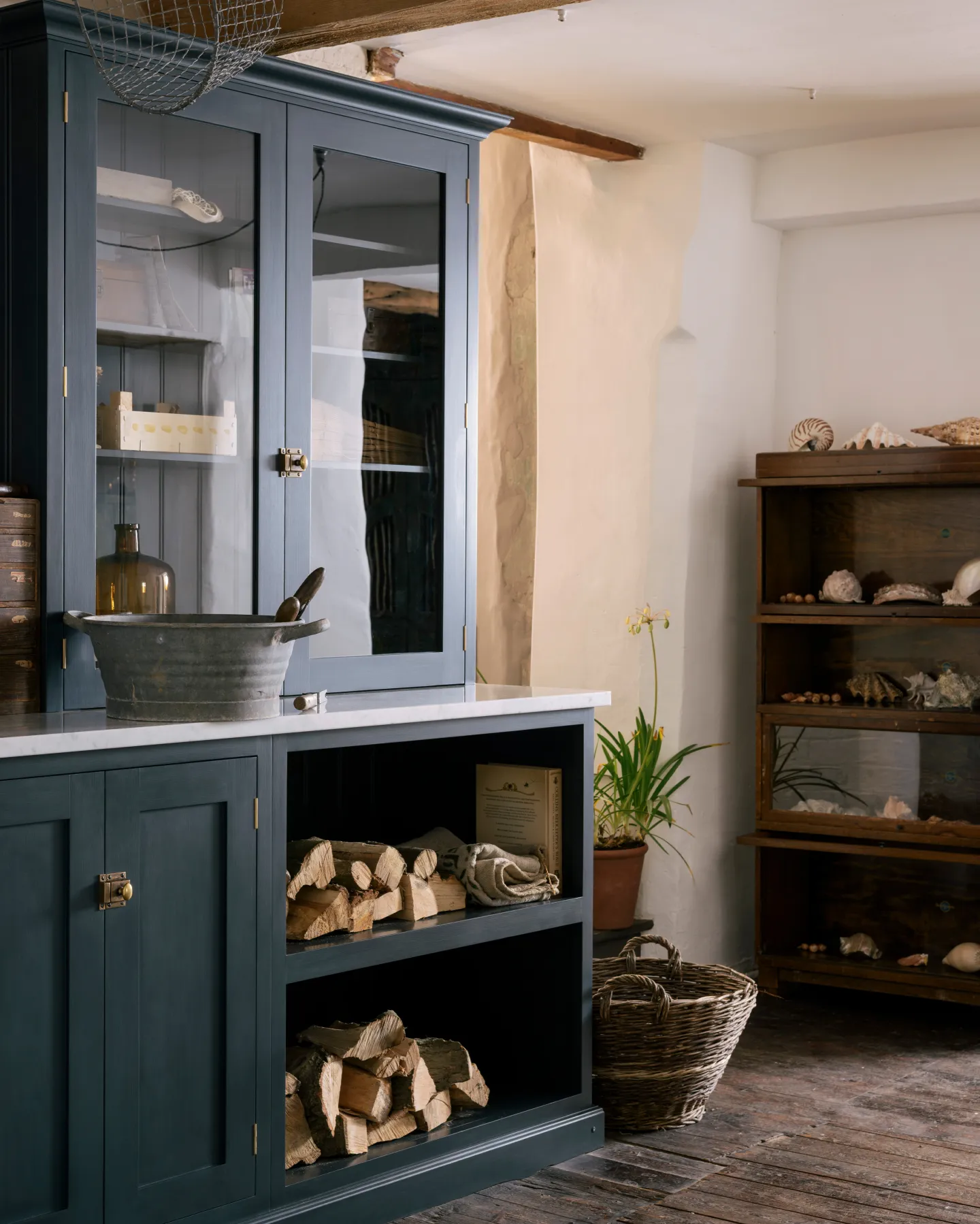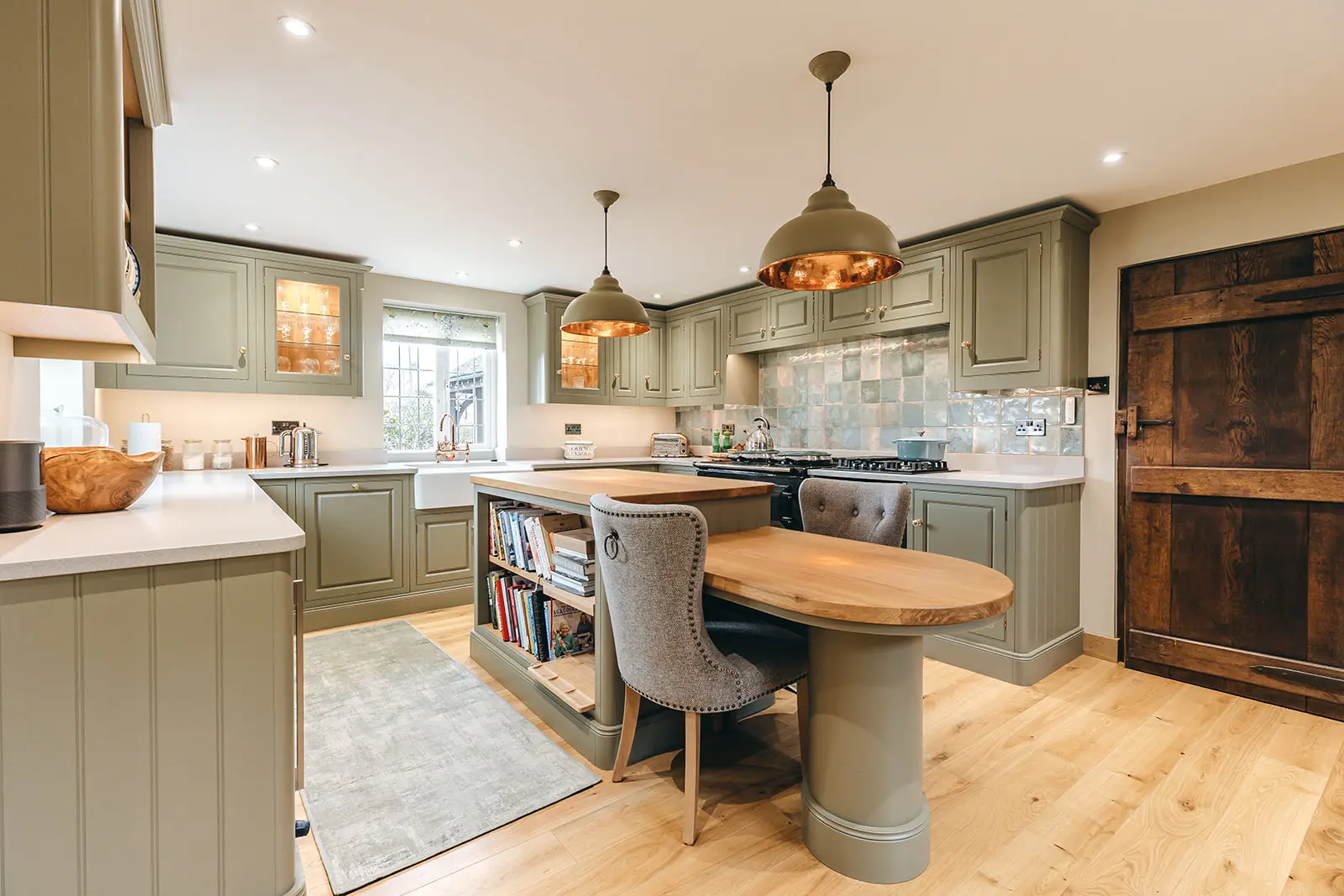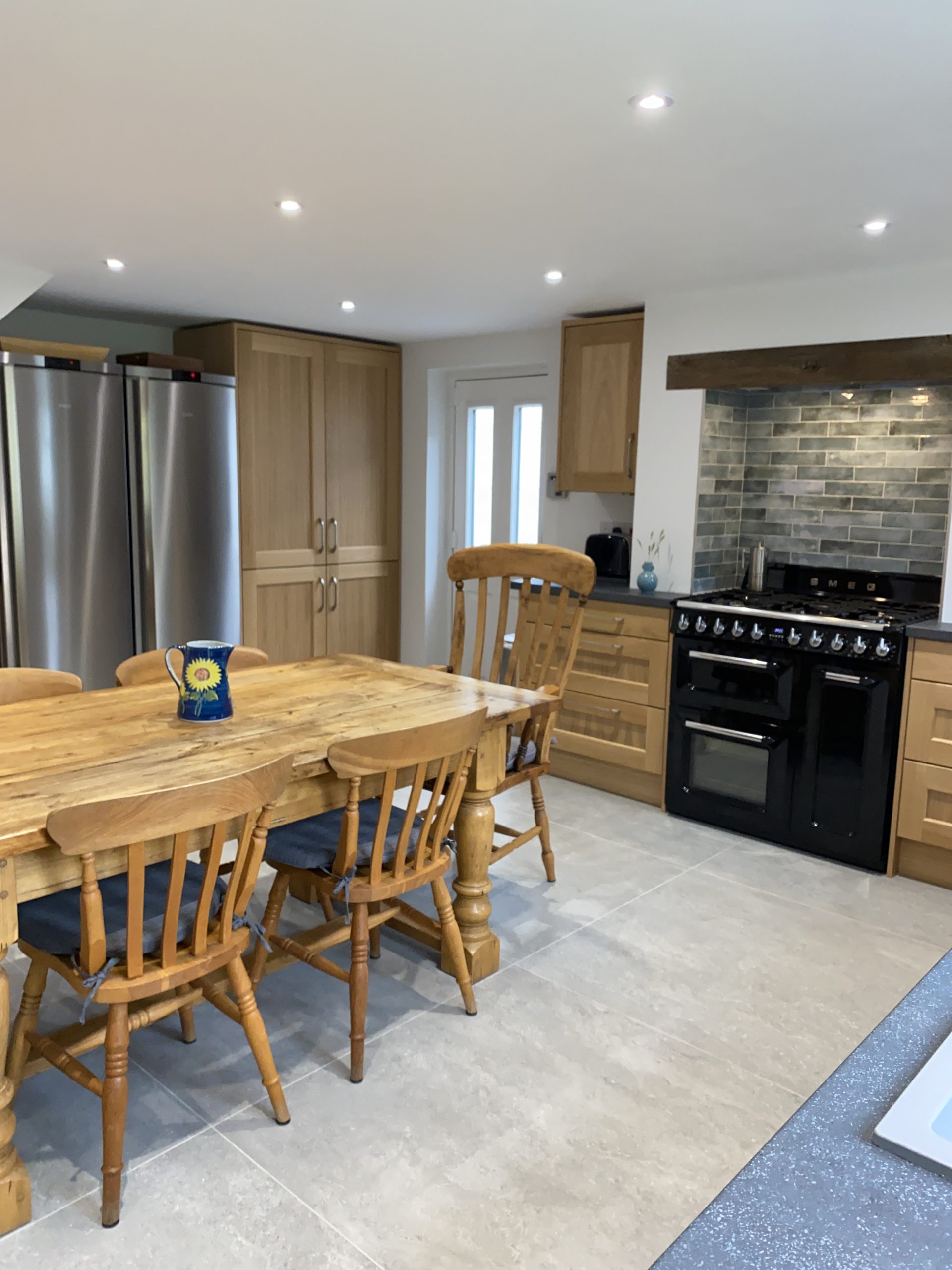Classic Traditional Kitchens
Traditional kitchens are a celebration of classic design elements paired with modern functionality. At the heart of a traditional kitchen is its commitment to natural timber, painted cupboard doors, and open shelving.

Sarisbury, Fareham
Beautifully understated and economical furniture, inspired by authentic Shaker carpentry.
Price Range:
£12,000–£40,000

Crofton, Fareham
Shaker kitchen installation in Crofton. Soft colours with classic double height dining area.
Price Range:
£22,000–£45,000

Portchester, Fareham
Milford Shaker-style cabinets in natural oak, beautifully stained in Osmo Raw for a bespoke finish.
Price Range:
£10,000–£23,000
What Is A Traditional Kitchen
A traditional kitchen blends history, warmth and craftsmanship into a space that welcomes and endures. Unlike modern designs, it isn’t about minimalism—it thrives on detail, texture and charm.
Wooden cabinetry is central. You’ll often find recessed or raised-panel doors crafted from rich-stained timber or painted in soft hues—creamy whites, pale pastels, muted blues and greens. These cabinets stand out, not fade into the background. They’re often finished with ornate knobs or handles that give an air of elegance.
The layout usually centres on a substantial kitchen island. More than a prep zone, it acts as a social hub. You might sit with a coffee or lend a hand in cooking here. Islands often feature custom trim—turned columns, corbels or decorative panels—to enhance the traditional feel.
Worktops in traditional kitchens lean toward durable, timeless surfaces. Famous choices include granite, quartz, marble and hardwood benches. Many homeowners select marble for its classic beauty, though porcelain alternatives offer practicality
In layout, modern kitchens favour open-plan living. Removing walls encourages flow between kitchen, dining, and living areas, letting natural light fill the space. Central islands are multifunctional: prep zone, dining bar, storage hub, and social hub. Secondary or prep islands, sometimes called butler’s pantries, are emerging, allowing messy tasks to happen out of sight. The classic kitchen work‑triangle—sink, hob, fridge—remains essential.
Appliances in a traditional kitchen deliver modern efficiency, but they’re hidden. Integrated fridges and dishwashers sit behind matching cabinet doors. Prominent range cookers (or Aga-style stoves) take centre stage—not just for cooking, but as design features
Benefits of Traditional Kitchens
Lighting combines practicality with period style. Pendent lamps—often with brass fittings or ceramic shades—illuminate islands. Layers of ambient and task lighting ensure all areas are both functional and atmospheric.
Sinks and taps reinforce the aesthetic. Farmhouse or butler sinks—fireclay or cast iron with apron fronts—are common. Paired with cross-handle or lever taps in brass or nickel, they echo a bygone era. Pot fillers over the hob are also trending: functional and stylistically fitting to a traditional look.
Readability checklist
– Ornate wood cabinetry with decorative hardware
– Central island with crafted details
– Stone or wood worktops—marble, granite, quartz or timber
– Seamlessly integrated appliances, standout cooker
– Layered lighting with pendant feature pieces
– Farmhouse sink and vintage-style taps
Traditional kitchens reflect your personality. They feel lived-in—not staged. Built to serve both everyday life and entertaining, they remain stylish as tastes shift.
Further considerations for your traditional kitchen;
– Which sink style fits your cooking habits—apron front or inset?
– Which finish speaks to you: natural wood, painted, or mixed?
– Want the island as prep space, gathering spot, or both?
– Prefer visible cookers like an Aga or sleek hidden appliances?

